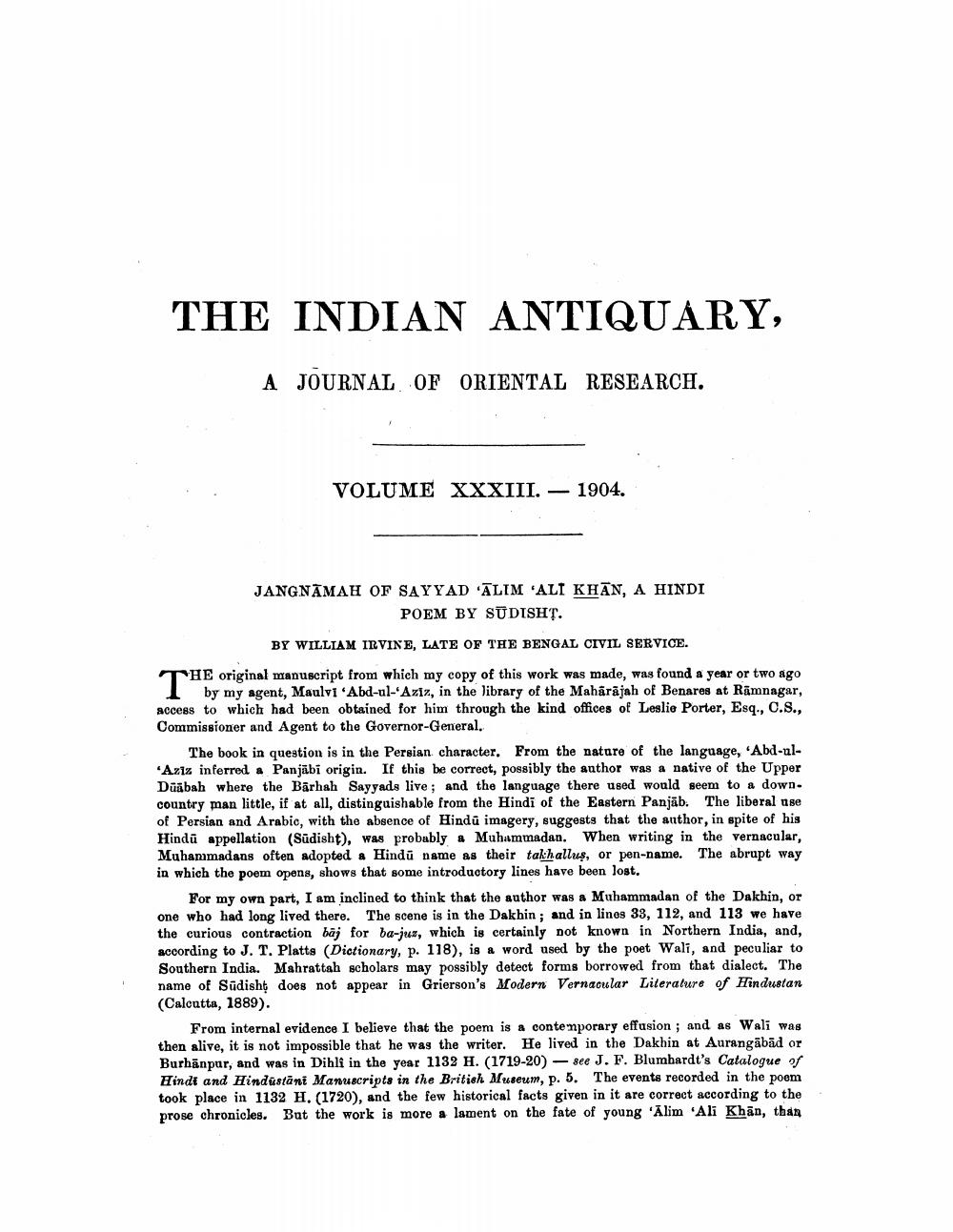________________
THE INDIAN ANTIQUARY,
A JOURNAL OF ORIENTAL RESEARCH.
VOLUME XXXIII. – 1904.
JANGNAMAH OF SAYYAD 'ALIM ALI KHAN, A HINDI
POEM BY SŪDISHT.
BY WILLIAM IRVINE, LATE OF THE BENGAL CIVIL SERVICE.
THE original manuscript from which my copy of this work was made, was found a year or two ago
1 by my agent, Maulvi 'Abd-ul-Aziz, in the library of the Maharajah of Benares at Ramnagar, access to which had been obtained for him through the kind offices of Leslie Porter, Esq., C.S., Commissioner and Agent to the Governor-General.
The book in question is in the Persian character. From the nature of the language, 'Abd-ulAziz inferred a Panjäbi origin. If this be correct, possibly the author was a native of the Upper Düūbah where the Bärhah Sayyads live; and the language there used would seem to a downcountry man little, if at all, distinguishable from the Hindi of the Eastern Panjab. The liberal use of Persian and Arabic, with the absence of Hindū imagery, suggests that the anthor, in spite of his Hindū appellation (Südisht), was probably a Muhammadan. When writing in the vernacular, Muhammadans often adopted a Hindu name as their takhalluş, or pen-name. The abrupt way in which the poem opens, shows that some introductory lines have been lost.
For my own part, I am inclined to think that the author was a Muhammadan of the Dakhin, or one who had long lived there. The scene is in the Dakhin; and in lines 33, 112, and 113 we have the curious contraction baj for ba-juz, which is certainly not known in Northern India, and, according to J. T. Platts (Dictionary, p. 118), is a word used by the poet Wali, and peculiar to Southern India. Mahrattah scholars may possibly detect forms borrowed from that dialect. The name of Sūdisht does not appear in Grierson's Modern Vernacular Literature of Hindustan (Calcutta, 1889).
From internal evidence I believe that the poem is a contemporary effusion; and as Wali was then alive, it is not impossible that he was the writer. He lived in the Dakhin at Aurangabad or Burhanpur, and was in Dihli in the year 1132 H. (1719-20) - see J. F. Blumhardt's Catalogue of Hindi and Hindustani Manuscripts in the British Museum, p. 5. The events recorded in the poem took place in 1132 H. (1720), and the few historical facts given in it are correct according to the prose chronicles. But the work is more a lament on the fate of young 'Alim Ali Khan, than




